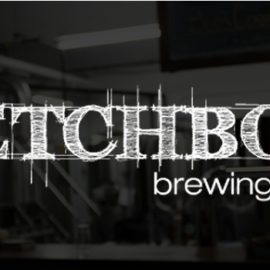
What’s that? You’re a small brewery who has to do everything yourself, including your brewery website, and you’re worried it’s going to suck?
You should be. It is very hard to make a good DIY website, brewery or not, without real skills. And, unless you start with a lot of money, when you’re still young and growing you rely on your own skills for pretty much everything.
But you CANNOT. AFFORD. TO SUCK. ONLINE.
You must set up a website as your brewery’s online home base. Even before you go to social media.
But how can you do that when you’re still figuring out how to fit the fermenters into the corner or your build-out?
There’s something to be said for real talent and expertise, but until you’re ready to make that jump, there are a few tips you can use to create a legit, functional brewery website.
Platform and Design
1. Plan for Growth
Before you even worry about photography and menus, think about which platform makes sense for your brewery.
First, you need to understand that “having a website” means, minimally, three things:
- You have purchased a domain – That is, the actual internet address of your brewery, something like “yourbrewery.com.”
- You have a web host – This is a company that provides the storage for your website and usually offers e-mail as well.
- You have a content management system (CMS) – When people talk about platforms, they’re usually talking about the CMS, the program in which you actually build your brewery’s website.
I want to talk about your CMS. Wix, Weebly, and Squarespace make building your own site super easy. They have beautiful themes and convenient plug-ins, even for e-commerce (selling merch and such online).
The web developers I’ve talked to, though, generally prefer open source solutions like WordPress and Joomla. The reason for this is that they can get very granular and customize everything about your site.
When you are just starting out, the proprietary platforms are obviously the most attractive. WordPress and Joomla will require some learning and can be, frankly, pretty frustrating at first.
However, chances are you will one day want a more customized website for your brewery, in which case your developer will be so much happier with you if you started off in WordPress or Joomla. Otherwise, you’ll have to move everything over from one platform to the other, and something always gets lost or goes wrong and it’s a hassle for everyone.
WordPress doesn’t pay me to say that; it’s just what I’ve heard.
That said, if you simply want to get a simple site up and running, it may make sense to start on Squarespace or Weebly. I’d recommend talking to a developer, though, before you launched a real content strategy.
2. Decide What’s Important
Before you create your site, you need to know what you want it to do for you. As a brewery, you’re probably going to feature photos of your beer, your location, and your happy employees and customers.
You’ll also want to collect e-mail addresses for your newsletter (yes, you must have a newsletter).
Yes, you’ll want a page for news and maybe a page for your menu, but
3. Keep It Clean, Keep It Simple
I am not trained as a graphic designer, but I’ve had lots of graphic designers say they like my logo and I’ve had plenty of clients say they like my site—both of which were DIY.
What I’ve learned about design comes from talking to designers and studying my own impressions to others’ sites.
The basic rule is less is more. Opt for fewer buttons, fewer images, fewer choices, less noise. Choose a clean, simple theme that allows you to feature what’s important to you. Don’t crowd things in just because you think they’re important. Focus on something that looks nice whether it’s large, tiny, color, or black and white.
Content
1. Answer Visitors’ Questions
Think about the kind of information a visitor wants to know when they visit your brewery’s website. Yes, something about who you are and what you do, but more importantly they’ll want to know things like Where is your tap room or restaurant? or What hours are you open?
Make it easy to find important information.
Seriously, how irritating is it to bounce around a site not finding what you need to know?
Save the rambling origin story that you wrote at 1 a.m. for its own special page. Keep everything else simple. Your About page or section is still part of your marketing strategy and should emphasize key brand differentiators.
2. Develop a Content Strategy
What, you may ask, is a content strategy? Simply put, it’s a plan for what kinds of posting you’ll do and when you’ll do it.
The simplest content strategy might have just a couple lines. For example:
- Three tweets per day
- Facebook posts on Monday, Thursday, and Friday
- E-mail newsletter every 3rd Friday
In a more sophisticated strategy, you could choose themes for each month and design all your posts around those themes. You might include additional platforms like Instagram and Snapchat. You might add video or Facebook Live. Perhaps you want an e-mail welcome series to bring newcomers up to speed on who you are.
You should minimally think in terms of what you’re doing in any given week. Where is your audience, how can you reach them, and how can you get them back to your website where you can do the work of selling them?

